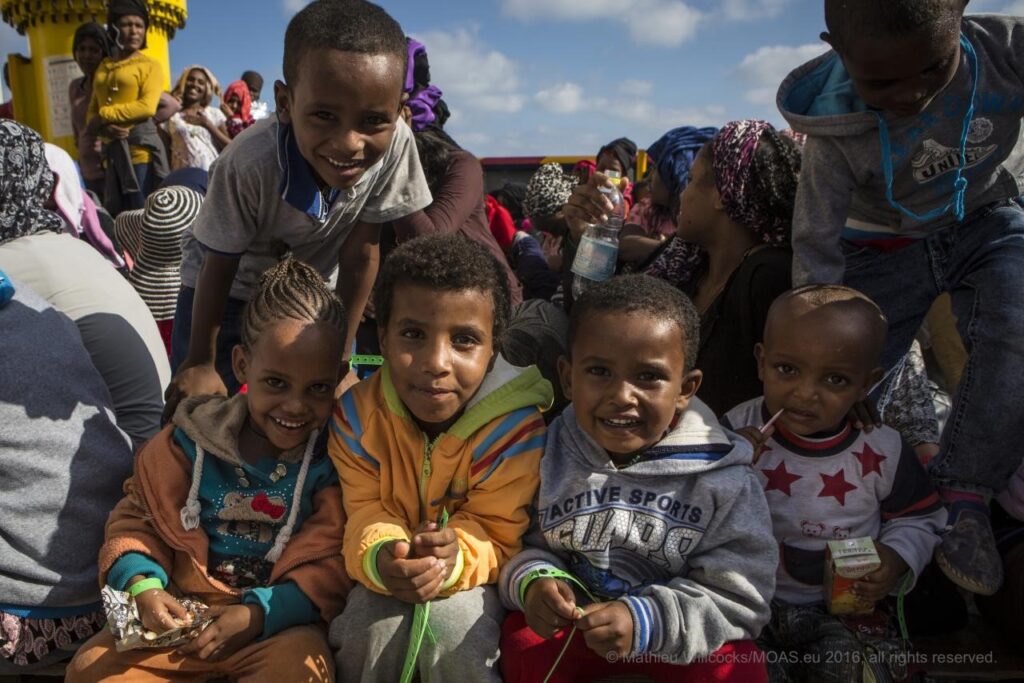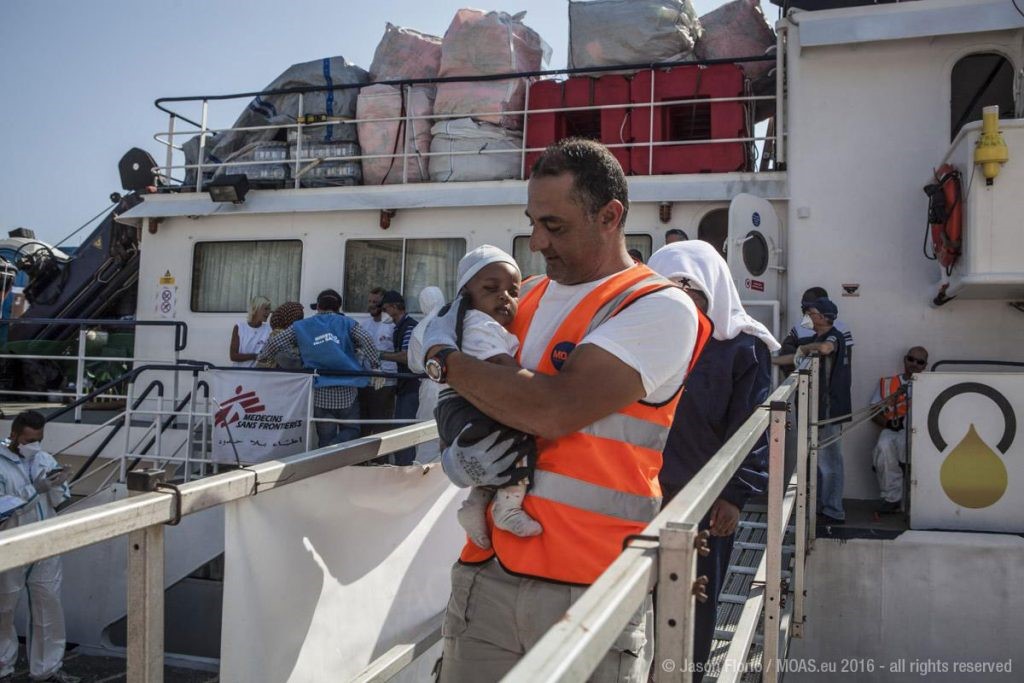“Humanitarian corridors are a message to Europe to remind it that building walls is not the solution to resolve the migrant crisis.”
Paolo Gentiloni, Minister of Foreign Affairs, on the arrival of the group of refugees in Fiumicino on 29 February 2016
Here at MOAS, having experienced first-hand the horrendous migration journeys desperate people take every day to flee poverty, conflict and other complexities, we are passionate about the need for safe and legal alternative migration routes. We are, therefore, campaigning for the implementation and expansion of safe and legal routes worldwide to prevent more migrants falling into the hands of human traffickers or taking hazardous migration journeys. This week we are taking a look at humanitarian corridors and why they may offer a promising alternative to the status-quo.
What are Humanitarian Corridors?
Humanitarian corridors refer to a safe pathway for either aid into a country or of people out of a country in the humanitarian context. The main objectives of humanitarian corridors for Europe are to prevent the need for more dangerous migration journeys across the Mediterranean, which have resulted in almost 20,000 migrants dying, or going missing, at sea since 2014. Humanitarian corridors are also vital to further prevent the possibilities of vulnerable migrants being exploited by human traffickers during their migration journey, whilst providing people in vulnerable circumstances a legal means of entering Europe through the distribution of humanitarian visas.
As humanitarian visas are monitored, State authorities can have more control and input over immigration which in turn makes the process more efficient and cost effective as, instead of an emergency response model to influxes of migrants which uses significant resources and a significant sum of the state budget, humanitarian visas allow states to establish structures to process migrants in a predictable and ordered way.
How do this type of Humanitarian Corridor work?
This novel model of humanitarian corridors where a non-governmental entity has coordinated an arrangement with the government to provide with humanitarian visas for aerial evacuations has its roots in Italy following a Memorandum of Understanding between the Community of Sant’Egidio, the Federation of Evangelical Churches in Italy, the Tavola Valdese and the Italian Government.
To issue humanitarian visas, the organisations involved first create a list of potential beneficiaries via partnerships (for example with NGOs and local churches and associations) in the countries involved in the humanitarian corridors project. The list of potential beneficiaries of humanitarian visas is then sent to the Italian consular authorities of the countries concerned, so that the Italian Interior Ministry can review it. Humanitarian visas are finally issued by Italian consulates in accordance with article 25 of EC Regulation no. 810/2009 of 13 July 2009, which allows a member state to issue visas on humanitarian grounds, for reasons of national interest or because of international obligations. The issuing of humanitarian visas consequently goes through a much stricter and formalised process than the current system which deals with cases as they come in an, arguably, somewhat sporadic nature.
Furthermore, the organisations that are involved in this initiative are committed to providing legal assistance to those who are granted humanitarian visas, accommodation and hospitality for a reasonable period of time. They are also offered economic support for the transfer to Italy as well support for their integration in Italy, such as an opportunity to learn Italian and assistance in their job search. Once the individuals have arrived in Italy in this safe and legal way, they may then proceed to apply for asylum status.
Humanitarian corridors also help eliminate the current random nature of migration and resettlement in ensuring that vulnerable people whose lives may be in danger or who have specific needs that cannot be addressed in the country where they have sought protection still have guaranteed access to the support they need.
“A good example of what Europe can do to help migrants and to address the current flows of refugees.”
Nils Muižnieks, Council of Europe Commissioner for Human Rights, 2 March 2016
How are Humanitarian Corridors funded?
Another characteristic of humanitarian corridors is that they have varied sponsorship and for the Sant’Egidio initiative the project is self-funded by the associations which promote these alternatives and not by the state. However, the Vice-president of the European Parliament has stressed that a key challenge of this initiative is to include funding for European Humanitarian Corridors in the EU’s financial framework for 2021-27 as evidently greater financial support would lead to a stronger and more effective system across Europe.
Conclusion
Humanitarian corridors have thus been proposed as a model which can be easily replicated throughout Europe, not solely by associations or private individuals. However, if we are serious about reducing irregular migration in opting for legal pathways then it is essential, we have a united European response in embracing humanitarian corridors as an improved resettlement framework. That is why MOAS is so passionate about campaigning for more countries to solidify a commitment to safe and legal migration routes, as by sharing the responsibility we all have towards displaced communities in an ordered way we may enrich our societies and prevent further unnecessary fatalities along these unsafe and unpredictable migration routes.
To support our campaign for Safe and Legal Routes sign up to our advocacy group now: https://www.moas.eu/safeandlegalroutes/
If you are interested in the work of MOAS and our partners, please follow us on social media, sign up to our newsletter and share our content. You can also reach out to us any time via [email protected]. If you want to support our operations, please give what you can at www.moas.eu/donate.


